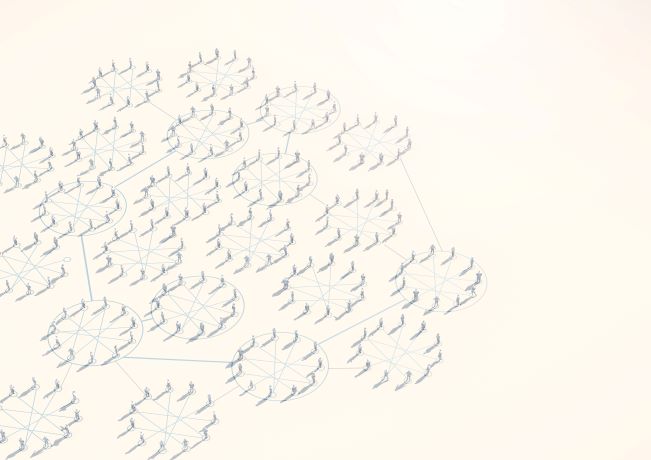As I explained in
Part 1 of this two-part series, best-fit activities must always accompany a best-practices approach to planning connected workspaces. And the the best way of developing a best-fit strategy for the connected workspace is to set clear requirements, ensuring these result from the organization’s unique characteristics.
I suggest there are three main types of requirements:
First, there are the organizational outcomes that the connected workspace is designed to create — i.e., the appropriate human, organization, and social capital. As I suggested in my last article, the connected workspace can play a role as part of organization capital, or it can contribute toward the creation of human and social capital.
Secondly, organizations should identify clear organization principles that express what’s important in how the organization delivers its outcomes. For example, a new informal principle that has recently started to underpin many organizations’ operations today is that people can manage their own performance and that managers need to trust them to do this.
And thirdly, organizations today benefit from adding additional workspace requirements based upon the needs and expectations of employees and other workers. Using these expectations in the design of the connected workspace does not subtract from the value of approaches like journey mapping, but it proactively addresses the need to ensuring a compelling employee experience by building this into the design of the organization, including the connected workspace.
Having these requirements in mind, the organization can then identify a range of options for how it wants the connected workspace to operate, and compare these options against its requirements, in order to choose the one connected solution that matches best. Very often, there will be no one ideal solution, just various options with different strengths and weaknesses, compared to the organization’s requirements. The task is therefore to pick the one with the greatest strengths and the minimum weaknesses. These days, organizations obviously need to perform this design activity in an agile, iterative, and consultative manner.
The organization can then implement the appropriate processes, tools, and activities needed to create the desired sort of workspace. In addition, the organization also needs to implement actions focused on mitigating the impact of the trade-offs involved in selecting one option rather than another.
For example, an organization could select a mainly centralized approach, organizing people in functions and supporting them by fairly traditional intranets, collecting and organizing knowledge along mainly functional lines. When people are able to return to their city center offices, these are most likely to be arranged into fixed departmental areas (just with staff given greater personal working areas than before —which may mean some staff staying remote, or all staff working more flexibly according to business or individual needs).
Alternatively, the organization could be more distributed, enabling people to work through informal networks and allowing them to continue working remotely, using enterprise social networks to connect cross-organizationally. Physical workspace designs would allow people to move around in order to work in varied locations and different types of space (obviously supported by thorough disinfecting and maybe the use of disposable workstation covers, etc.).
However, in either scenario, the organization also needs to manage the trade-offs associated with these options. Otherwise, it will find itself repeating the commonly repeated pendulum swing of moving from centralization to decentralization and back again every few years or so.
Therefore, if the organization is going to focus on centralization, it also needs to ensure people can still make local decisions and take whatever actions are appropriate locally where necessary. For example, this might be by developing a large meeting space (digital, physical, or a combination of these) where the whole organization can meet to discuss and agree central priorities and local exceptions.
Or if the organization is going to be decentralized, then it still needs to ensure decisions and actions can be coordinated, perhaps by using a digital platform enabling networked operations.
Individual Best Fit through Digital Technology
Best fit applies to teams and individual employees, too. People have different needs and motivations and treating everyone in the same way makes as little sense as doing this for organizations. This is especially true after the additional freedom provided to many employees while working remotely due to Covid-19.
We can work toward customizing approaches in physical workspace design and in HR practices. However, enabling individual best-fit approaches is one area where the digital workspace comes into its own.
Algorithms operating at the heart of many digital workspaces allow usage or exhaust data generated by these systems to be utilized for tailoring and customizing the digital employee experience. In addition, new AI-based tools are enabling digital workspaces to learn about the person using them, responding with a truly personalized and best-fit solution for each individual.
Along with the ability of the digital workspace to support people when the physical workspace can’t, this provides one more reason for seeing the digital aspect of the connected workspace as particularly important. We just need to ensure that we design the rest of the connected workspace in an aligned, best-fit way.




